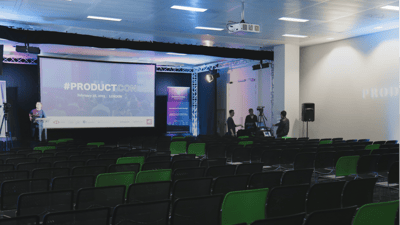Welcome to this week’s LinkedIn Live, hosted by Adway’s own Sara Dalsfelt, Senior Advisor of Digital Talent Acquisition. Joining her is Melissa Dobbins—Founder and CEO of career.place. Prepare yourself for a SAVVY session where we learn how to get tech comfortable enough to optimize the TA process and reach operational excellence in 2021!
Background Check
As Founder and CEO of career.place and a former engineer, Melissa’s main goal is to radically reshape the hiring process by removing bias and harnessing the synthesis of science, technology and training. How, you may ask? Through a SaaS-based offering, career.place removes bias from the hiring process by not relying on the resume as the beginning piece of the hiring equation. Instead, career.place’s solution asks a series of questions— from salary desired to detailed assessments—allowing only truly qualified candidates to advance.
The TA “Tech-Comfortable” Pyramid 🔺➡ How Does Your Company Stack Up?
-
We haven’t even started working with data/ systems and don’t know where to start.
-
We’re getting more and more comfortable with data, but still need a lot of help.
-
We’re well on our way, but we want to create an entire data ecosystem for optimization.
Stage A: Know What You Need to Solve and Ditch the Fear of the Unknown
There’s a difference between being drawn to technology and knowing what you need to accomplish with it:
- What are the processes you’re trying to make easier?
- What problems are you trying to solve?
- What questions are you trying to answer but don’t have the data to do so yet?
No matter where you are in the spectrum, if you start from this framework, you can build those technologies and processes to work for you, rather than the other way around.
If fear is a factor—“will the technology replace the people”—remember that its purpose is to do the grunt work you DON’T want to do! Technology is an AUGMENTATION to reality, not a replacement. It can find patterns that humans simply can’t detect, but it can’t make DECISIONS like a human can. Technology will only make you more powerful.
Give Yourself Permission to Fail & Realize YOU are the Most Important Asset!
If you’re in the A Group, start small. Don’t try to immediately create a huge technological system. Give yourself time to build momentum and permission to fail. Trial-and-error is key. Think about the end goal in mind. Ensure each step you take isn’t going to pull you in the wrong direction. The early stages are not about showing off your results. They’re about starting somewhere! You are the strategic element in controlling the systems and also the most important asset in this process.
Stage B: It’s Time to Start DOING Something with Your Data – Don’t just be a data storage
You’re getting more comfortable with having data as a true player in the game. You’re collecting it, and it’s time to do something with it. In this stage:
-
Get to know the data you have**. **See how it can be augmented to answer even more questions and solve even more problems. Recognize key data patterns to make better strategic decisions.
-
Build **systematic **validation and feedback into every one of these advanced steps. How? Always question. Don’t just take the technology’s word. Recognize when things aren’t going well and give yourself room for trial-and-error.
-
In **TA in particular, **continue** to **shop around**. **Even if the product you have offers you solutions, still be aware of what’s out there and how different technologies have different strengths. You’re not going to get a “perfect” fit, so get the best fit.
If Your Metrics Aren’t Driving Business Decisions, They’re a Waste of Time
If your metrics are not driving behavior, ensuring proper operations, and driving business decisions, they’re simply not worth your time. You need to go back to the question: “what do you need answered?” You need the kind of data that helps you take corrective action.
Stage C: The Leading Edge: It’s Time to Get Ahead of Your Competitors
You’re playing with the leading edge now. You’re looking at machine learning, AI, bots, and technology that takes you to the next level. Here’s what to do:
- Always dig deeper. It’s your responsibility to ask and understand what the technology is doing, how it’s doing it, how the tech provider proves it’s performing as it should, and what the adverse impacts are. Are your programs as equitable and inclusive as they can be?
- Know YOUR systems. You don’t have to be “tech-savvy,” you just have to be proficient in what you have in front of you. That way, you can be “tech comfortable” enough to get YOUR job done.
Melissa’s Top Two Takeaways
-
Know where you are starting and what you need to do before you start shopping.
-
The onus is on YOU for knowing what your tech is doing. Don’t just trust without asking the right questions. Partner with vendors who believe in their tech!








